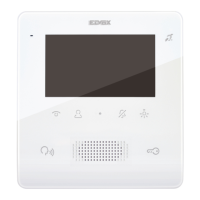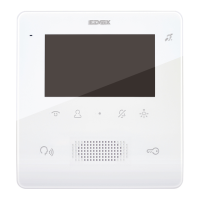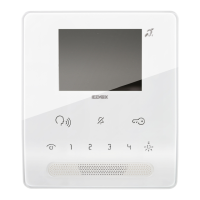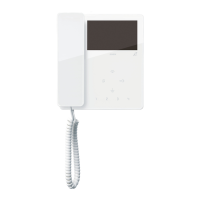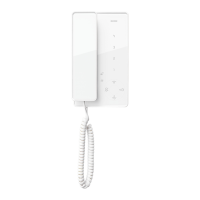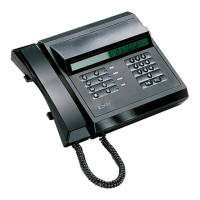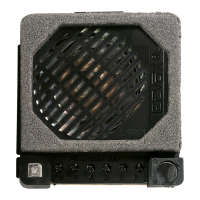9
TAB: 7559
EN
Key functions
In the subsequent sections of this document the touch keys are designated as shown in the gure below:
C (Access Menu
conguration)
P/A (Answer / End call /
Call to switchboard)
T4 (Stair light / Actuator
menu)
Lock
T2 (AUX2 / Intercom
menu)
T1 (Self-start)
T3 (Ringtone mute / Mute
microphone)
At rest, none of the buttons perform the touch function, but must be pressed for longer (around 0.4 s): this prevents the
accidental activation of commands. Unless specically disabled, the recognition notice is given by acoustic signalling.
Keys T1..T4 have two operating contexts:
• Actuations
• Intercom
In the Actuations context, keys T1..T4 have a default (when not programmed), as indicated in the following gure, along
with the default icons: They can be programmed from the installer menu or using SaveProg.
KEY ICON MEANING
T1
Self-start
T2
Aux 2
T3
F2 last outdoor unit
T4
Aux 1
In the Intercom context keys T1..T4 have no default conguration. They can be programmed from the installer menu
or using SaveProg.
T2 (P7 for SaveProg) is not congured by default and controls the second relay (Aux2). If it is congure via SaveProg,
it runs the programmed function. In standby, if only one of the Intercom context programmings are run, whatever the
programming of T2, 7559 will directly run the programmed intercom call. If two or more Intercom context programmings
are run, then the Intercom context menu is shown so that the user can decide which call to make.
The following table summarises and claries the T2 operation. It refers to the SaveProg programming, as this does not
depend on the context.

